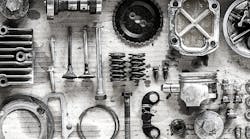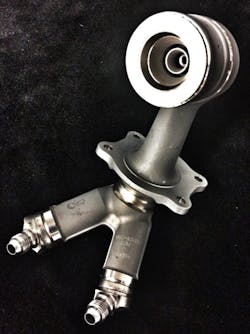As materials in 3D printing extend beyond thermoplastics to include metals, composites, dielectrics, and ceramics, more manufacturers are using 3D printing to produce parts for final products in industries from automotive to aerospace. Take General Electric’s famously 3D-printed jet nozzles, for example, which are already being incorporated into its turbines for commercial jets.
With more and more 3D printed parts hitting the market, Forbes predicts the spare-parts supply chain will shift toward 3D printing solutions within the next three years. A survey report from Strategy& estimates that 85% of spare-parts suppliers will build 3D printing into their strategies within five years, and that German spare-part suppliers will save 3 billion euros per year using the technology over the next 10 years.
To prepare for the road ahead, spare-part suppliers and logistics companies can build strategies and relationships that will streamline the process of on-demand spare-part production. Companies like Electrolux and Kazzata offer the tools for creating digital spare-parts inventories, while 3D printing service providers like Spare Parts 3D offer services to generate spare parts when they are needed.
Companies are already adopting 3D printing in the production of spare parts. Strategy& reports that 50% of customers investigate 3D printing their own replacement parts, especially as spare-part suppliers struggle to meet their current demands. Car companies like Mitsubishi have also invested in 3D printing solutions for spare parts; its parent company, Daimler started to 3D print metal parts for the company’s older trucks, and has been printing plastic spare parts for about a year.










